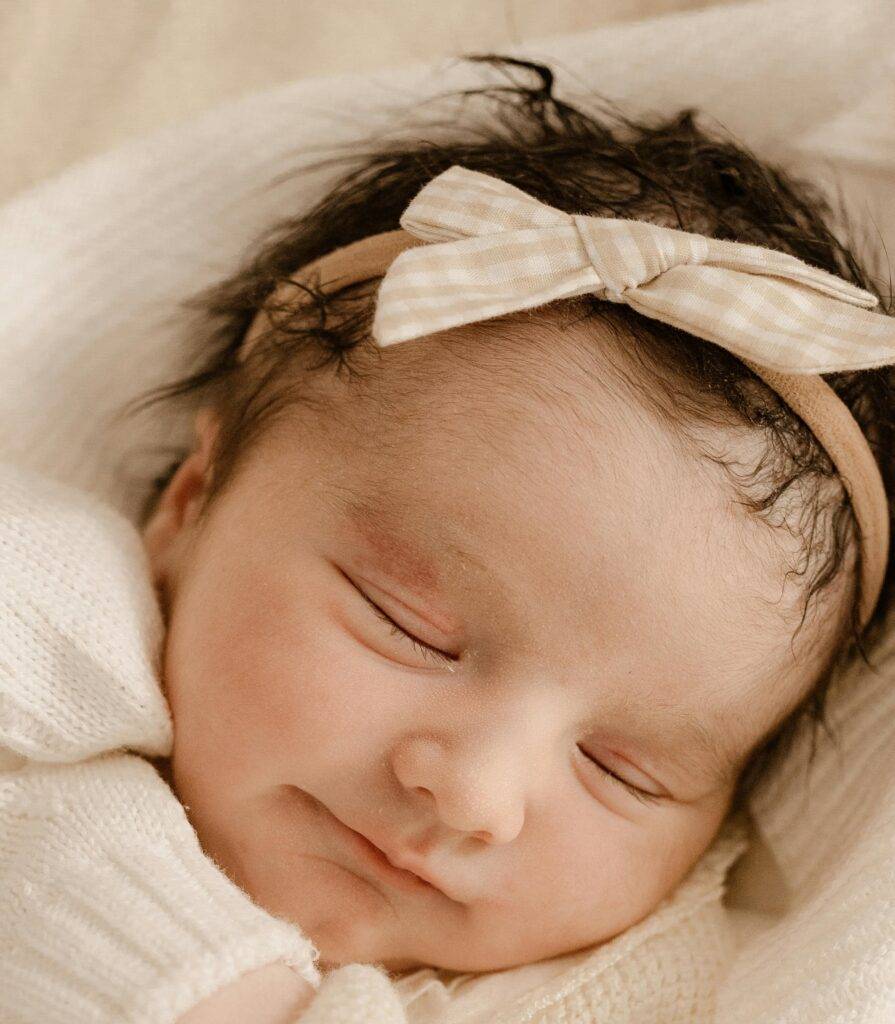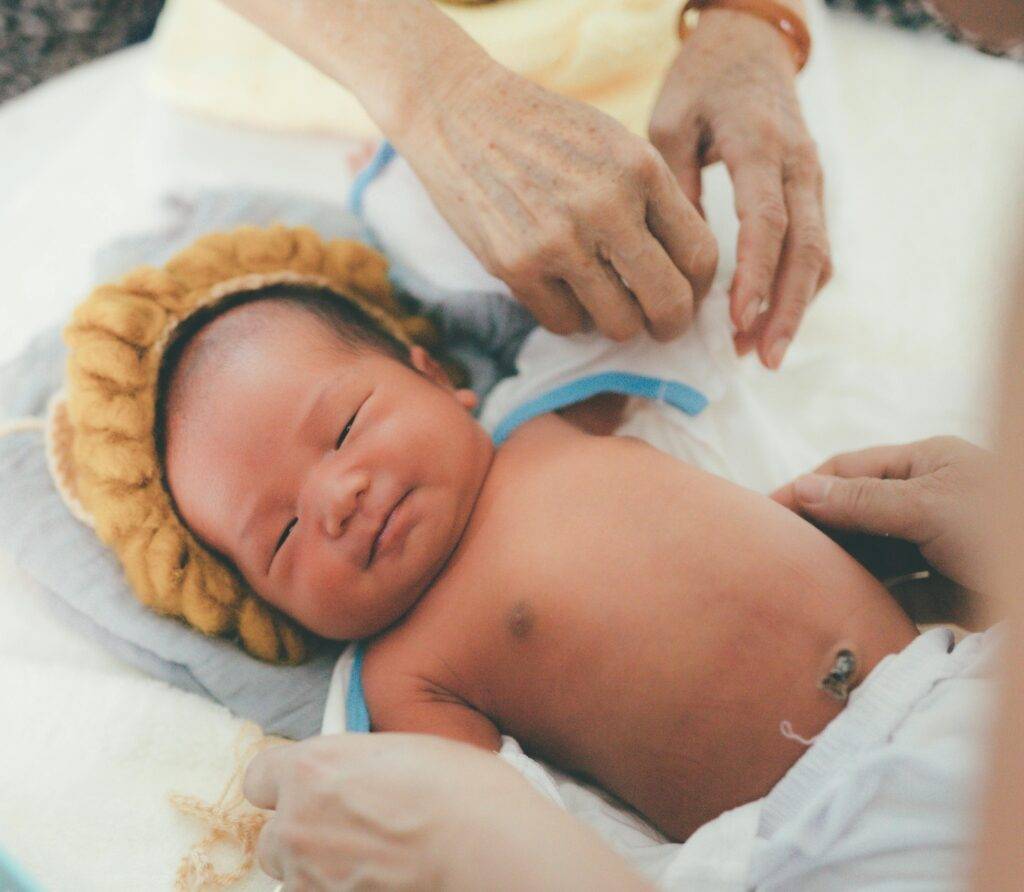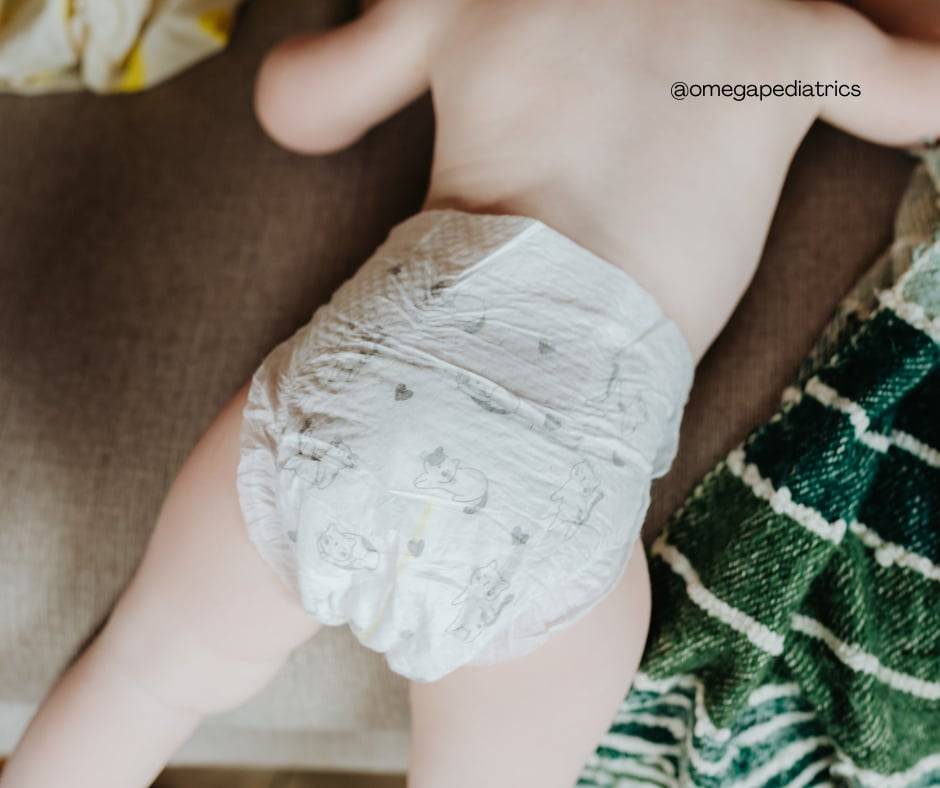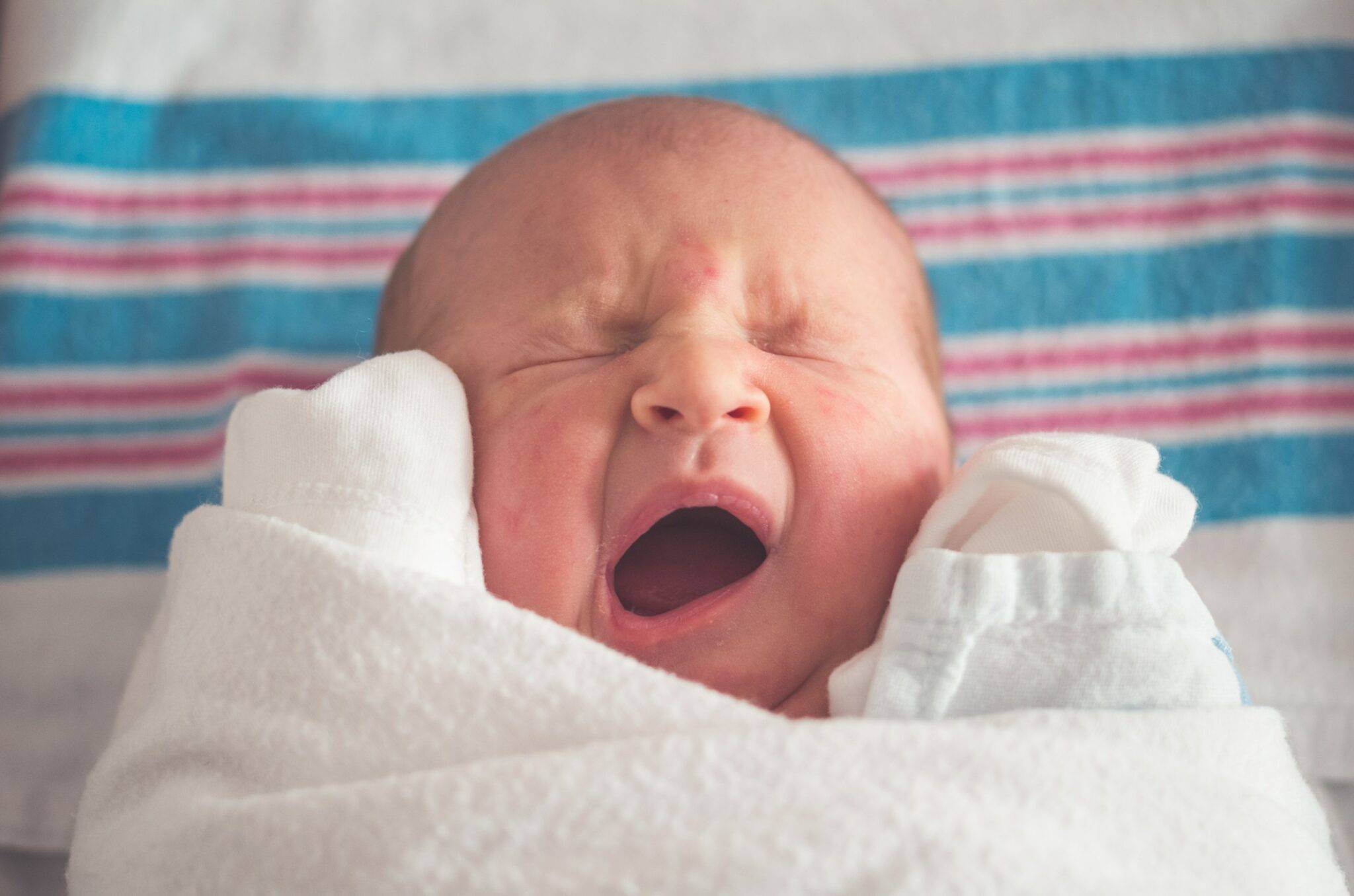You are aware that sleep is very important for our babies. It is because sleep doesn’t only help our babies grow. It also ensures that they are happy and well-rested!
But sometimes, it’s hard to let our babies doze to sleep. Especially when there are a lot of external noises. There may be cars passing by, construction going on nearby, or other distracting sounds that may disturb our baby’s sleep!
White noise has been gaining popularity as a sleep aid for babies, and you may want to try this technique, too!
What is White Noise?
White noise contains all the audible frequencies humans can hear, making it a “uniform” sound that is consistent and constant. It is often described as a hissing, static-like sound likened to a television or radio tuned to an unused frequency.
White noise is generated by a white noise machine or a sleep sound machine, which produces a continuous and uninterrupted sound that can help mask other sounds in the environment.
How Does White Noise Help With Your Baby’s Sleep?
White noise helps create a masking effect that reduces other sounds your baby might find disturbing. The consistent background noise caused by white noise muffles sounds like your dog barking or your neighbor’s car honking.
White noise also creates a soothing environment for your baby. It mimics the sounds your baby used to hear while still in your womb, giving them a sense of security.
It also helps drown internal noise caused by the baby itself for better and longer sleep.
How to Use White Noise for Better Sleep?

White noise can be obtained from a sleeping device or a white noise generator that can be bought in the baby section.
Another option is downloading an application that plays white noise on your phone or tablet. This is a good option since it’s portable and can be used while traveling. Whether you’re looking for white noise for office purposes or white noise for public places, the portable white noise machine is the best sound conditioner for you.
It is recommended that the volume not exceed 50 decibels. This is similar to the volume of a hair dryer or normal conversation.
It’s also important to safely place the white noise machine or device away from your newborn’s ears, typically at least seven to ten feet away, to avoid any potential hearing damage.
Benefits of White Noise
The benefits of using a noise-canceling machine for your baby’s sleep are numerous, including the following:
- Helps your baby fall asleep faster and sleep longer.
White noise’s consistent and soothing sound creates a familiar environment for your baby. It helps them relax and drift off to sleep easily. It also blocks disturbing sounds that might wake your baby in the middle of the night.
Using a sound machine for sleeping creates a sleep association for your baby, signaling it’s time to sleep. This can help your baby develop healthy sleep habits and improve their sleep quality!
- Provides comfort to your baby.
Since white noise mimics the sound of the womb, it creates a sense of familiarity and comfort. It also helps your baby transition from the womb to the real world.
You may be worried when you and your partner talk loudly. With a sound machine for your baby, you can do your daily activities that are quite noisy– vacuuming, watching TV, etc. without really disturbing your baby’s sleep.
At What Age Might a Baby Self-Soothe Without a Pacifier?
Babies develop self-soothing techniques at different ages, but it’s common to see this skill emerge around 6 to 12 months. By 9 months, many babies begin to find comfort in thumb-sucking, holding a favorite blanket, or making cooing noises to calm themselves.
Signs Your Baby is Self-Soothing
- Thumb-sucking or finger-chewing: These actions can be a natural substitute for a pacifier.
- Cooing or soft babbling: Listen for gentle sounds or humming during nap time.
- Grasping a comfort object: Babies might cling to a small blanket or stuffed animal.
Encouraging Self-Soothing
- Consistent bedtime routine: Establishing a predictable schedule can help your baby feel secure.
- Being patient: Give your baby a few minutes to try and calm down on their own before intervening.
- Using white noise: Soft background sounds can create a soothing environment.
Remember, every baby is unique. If you’re concerned about your baby’s ability to self-soothe, consult your pediatrician for personalized advice.

Other Types of Good Noise For Your Baby
White noise is not the only sound that’s good for your baby. There are also other sounds to choose from, including the following:
Pink Noise
Pink noise is a deeper type of noise that’s bass-heavy. It usually has a softer sound and lower frequency. Pink noise can be compared to rainfall or ocean waves crashing onto the shore.
Pink noise has been found to be very soothing which can help your baby relax and fall asleep.
Brown Noise
Brown noise has an even deeper and richer sound compared to white noise. It has a lower frequency and rumbling quality, similar to a waterfall or thunderstorm sound.
Brown noise has been reported to be very soothing and can help mask external sounds more effectively.
Nature Sounds
Nature sounds like rain, ocean waves, or forest sounds are popular for sleep sounds. These create a calming and peaceful environment reminiscent of being in nature which can help your infant relax and fall asleep.
Womb Sounds
Some white noise machines or apps also offer womb sounds designed to mimic the sounds your baby heard while in the womb. These sounds can be comforting and familiar to your baby, helping them feel secure and calm.
Different Types of Self-Soothing Noises in Babies
Babies often make a variety of noises when they’re self-soothing, and these can depend on the situation. Understanding these sounds can help you better interpret their needs and states of comfort.
Babbling During Sleep Transitions
When a baby is transitioning between sleep cycles, you’ll often hear soft babbling sounds. These might include simple consonant and vowel combinations like “baba,” “mama,” or “dada.” This type of self-soothing is quite common and even charming, as it can sound like they’re talking in their sleep.
Whining When Being Rocked
In contrast, if you’re rocking your baby to sleep, they might emit a low whining sound. This noise indicates that they are in a state of relaxation but still processing the motion and presence of being held. It’s a normal and healthy sign of self-soothing.
Soft Sounds and Sighs
Many babies also make gentle “ahhh” sounds while waking up or putting themselves back to sleep. These soft noises are typically a sign that your baby is content and able to soothe themselves without much intervention.
Summary
- Babbling: Common during sleep transitions, sounds like early speech (e.g., “baba”).
- Whining: Often occurs when being rocked to sleep, indicating a processing of comfort.
- Soft Sounds: Gentle noises or sighs typically heard during waking or falling back asleep.
By understanding these different types of self-soothing sounds, you can better gauge your baby’s comfort and needs.

White Noise for Babies – Is it Safe?
One common concern among parents is whether white noise is safe for babies. The good news is that white noise is generally considered safe for babies when used appropriately.
It is recommended that the volume of white noise should not exceed 50 decibels, so it should be about the volume of a regular conversation.
It’s also important to safely place the white noise machine or device from your baby’s ears, typically at least 7-10 feet away, to avoid any potential hearing damage.
White noise shouldn’t be used as a substitute for safe sleep practices recommended by your pediatrician. White noise should only be used as a supplementary tool to aid in creating a good sleeping environment in combination with those recommended by your pediatrician.
White Noise Apps and Devices: Which To Choose?
When choosing the best white noise machine or application for your baby, plenty of options are available. You may consider these factors when making a choice:
Sound Options
Choose a sleep machine that has a lot of good sound options. If it has a variety of white noise, pink noise, nature sounds, and womb sounds to choose from, then that’s a good application.
With many sound options, you can experiment with which your baby loves the most!
Volume Control
Ensure that the white noise generator has adjustable volume control, allowing you to set the sound safely and comfortably for your baby’s delicate ears.
Timer Settings
A good white noise machine has timer settings. Timer settings allow you to automatically set the time duration of when the sound plays. This helps in establishing a bedtime routine for your baby. You also don’t need to wake up only to turn it off!
Portability
Consider the portability of the white noise app or device. That’s especially if you travel with your baby frequently. Go for a portable white noise machine so that it’s easy to set up anywhere!
Ease of Use
Choose a white noise app or device that is user-friendly and easy to navigate, with simple controls and clear instructions. This ensures you can quickly set up and adjust the white noise to suit your baby’s needs without hassle.
Safety Features
Check for any safety features, such as an auto shut-off after a certain period or overheating protection. Doing this will help guarantee that your investment in the white noise machine is secure and that you can use it safely and confidently for your baby.
Reviews and Recommendations
Read reviews and recommendations from other parents to understand the effectiveness and reliability of the sound therapy machine. Look for reputable brands with positive customer feedback and ratings.

Let Your Baby Have A Good Night’s Sleep With White Noise!
Playing white noise for sleeping is a good add-on tool for parents like you! It helps you in letting your baby sleep faster. Also, white noise provides comfort to your baby and improves their sleep quality.
When using white noise for your baby, following safe sleep practices recommended by pediatricians is important. Use white noise apps or devices with sound options, adjustable volume control, timer settings, and other safety features.
With the right white noise, you can create a peaceful and soothing sleep environment for your baby, helping them to sleep better and wake up refreshed.
So, go ahead! Give white noise a try, and see how it can benefit your baby’s sleep and your sleep quality.
Remember, a baby that gets enough sleep is a happy baby, and a less-stressed, more satisfied parent!
Consult with Your Pediatrician for White Noise Recommendations
If you’re unsure about which white noise is best for your baby, you may always consult your pediatrician like Omega Pediatrics.
We, at Omega Pediatrics, treat our clients like family. We guide our patients with utmost care since we believe everyone deserves to be loved. We are open until 9 pm to meet your baby’s needs.
We also offer various pediatric services, so you can rest assured that we have the resources and expertise to address all your baby’s needs.



